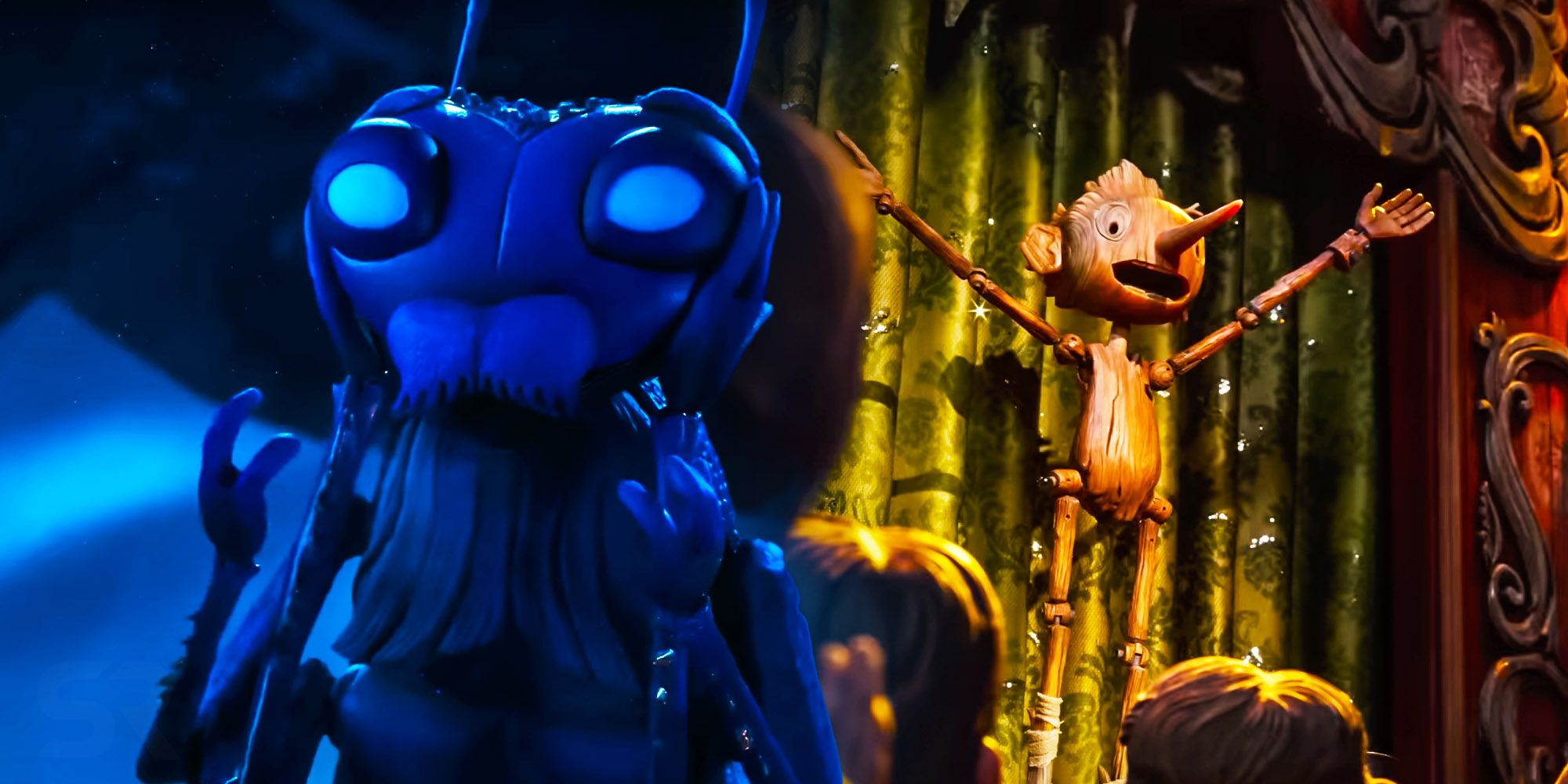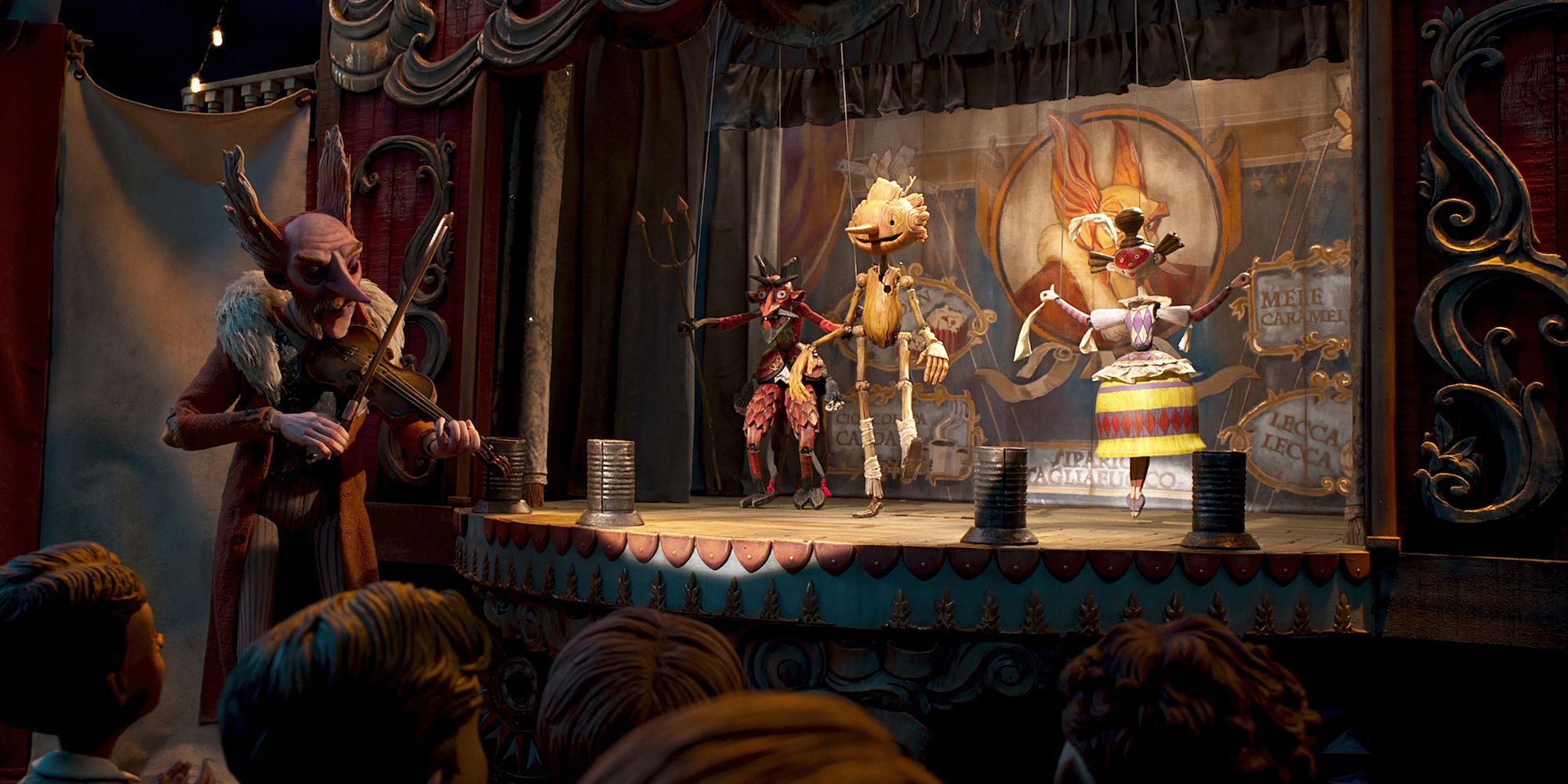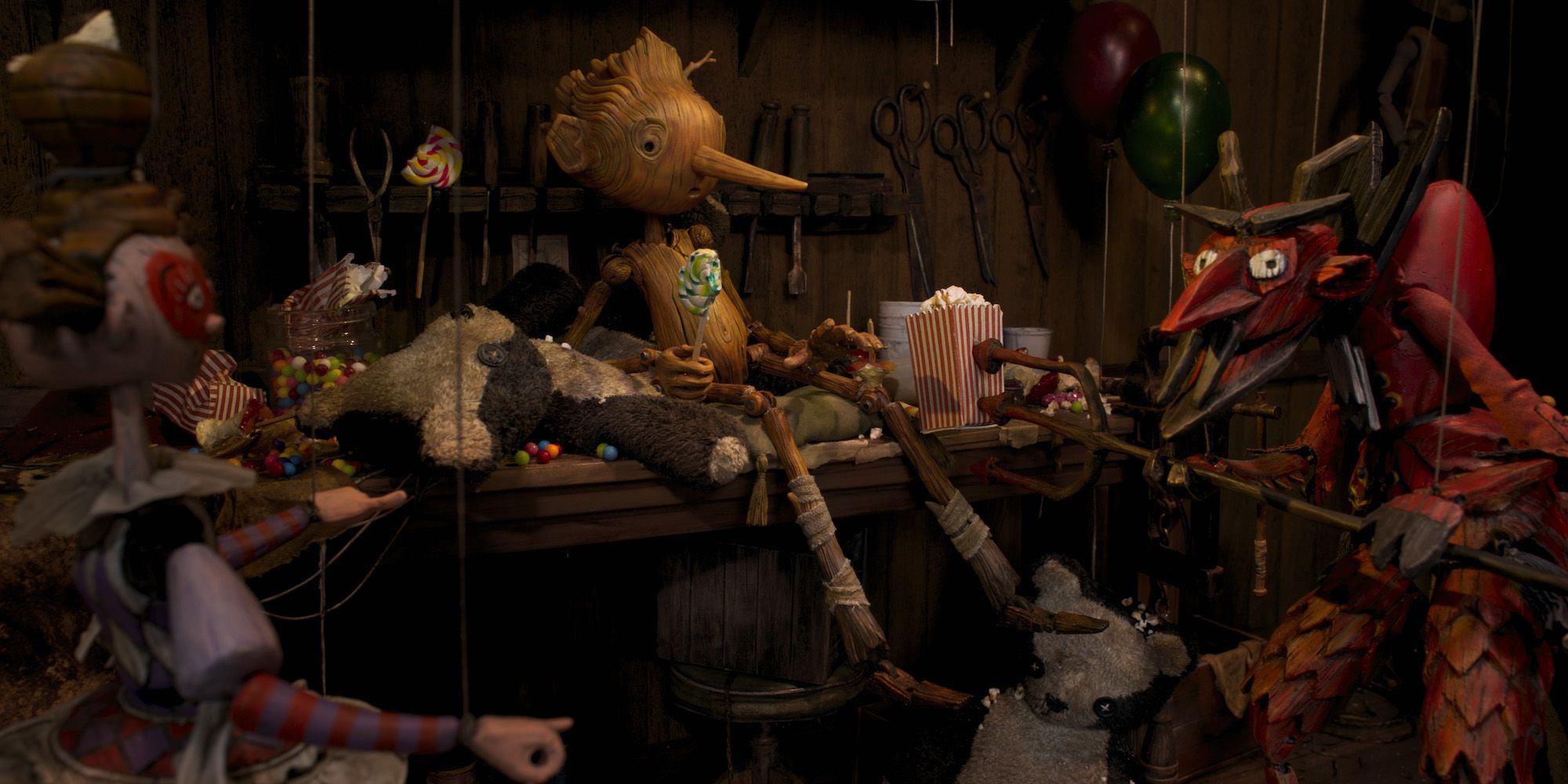Guillermo del Toro’s Pinocchio is darker than Disney’s live-action version, as well as its animated predecessor, but is it suitable enough for children to watch? Adapted from the 1883 novel by Italian author Carlo Collodi, the stop-motion animated Pinocchio will no doubt draw comparisons to Disney’s previous iterations — namely for the way it alters the well-known story by exploring more realistic avenues.
While audiences will recall the darker elements of Pinocchio’s story, including him and other boys transforming into donkeys and being sold, Netflix’s adaptation ramps up the grimmer story points. It even introduces the stop-motion animated version of the real-life Benito Mussolini, Italy’s fascist Prime Minister. What’s more, this version of Pinocchio includes violence, and not just the use of weaponry. Such characters and additional story beats make Pinocchio unsuitable for younger children under the ages of six and seven. At the very least, they should be watching under adult supervision.
What Ages Guillermo del Toro's Pinocchio Is Suitable For
Del Toro’s Pinocchio is more suitable for children who are eight years old or older because the stop-motion animation includes themes and storylines that are not suitable for audiences any younger than that. The older the audience member is, the more they will understand the themes Pinocchio is trying to convey. That includes older children, who are more likely to appreciate what del Toro, co-director Mark Gustafson, and co-writer Patrick McHale are attempting to show through this iteration of the beloved wooden puppet. While Pinocchio is a hopeful story, it has an abundance of sorrow and grim moments that will be better appreciated by older children and adults.
How Scary & Dark Is Guillermo del Toro's Pinocchio?
Guillermo del Toro’s Pinocchio is fairly dark, though not necessarily scary in the horror genre sense. Although it is in animated form, the film includes two fascists, one of whom puts his own child in a dangerous situation in a bid to teach him the same ideologies he upholds. One character puts a weapon into his son’s hands, and there are other, similarly gruesome, elements throughout Pinocchio. There are also rockets and bombs that are launched where children are located, and which create a sense of unease and terror.
The rise of fascism is also a looming threat throughout Pinocchio, and it makes everything more foreboding and dire. The stop-motion animated musical is not, however, scary so much as it can be incredibly disconcerting (which is good for its storytelling purposes and provides higher stakes for the characters). Pinocchio’s darkness is rooted in realism that will make audiences uneasy, and though that is terrifying enough, the animated film is not bloody or filled with jump-scares.
Most of the physical violence tends to happen offscreen, including Geppetto’s son, Carlo’s, death near the start of the movie, but the visual of young boys training for war is enough to frighten audiences. Ultimately, the Netflix adaptation of Pinocchio is less blatant when it comes to its scares and more gruesome and tragic in the presentation of its narrative themes, which is something del Toro and his filmmaking team are able to pull off without taking the enjoyment or hopefulness out of the film.



